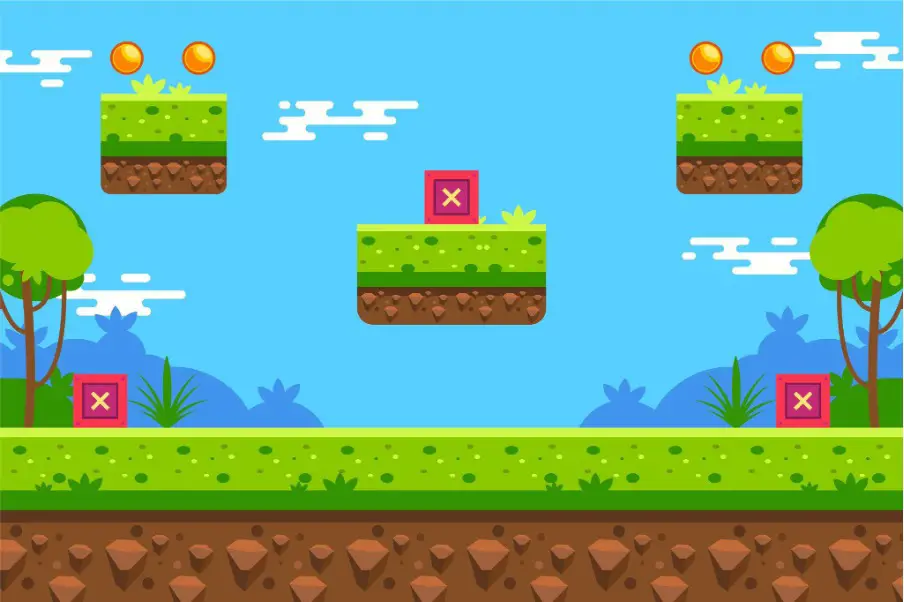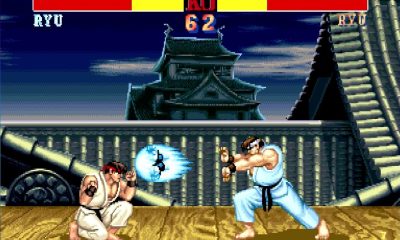When you talk about computer games, there’s a key element you cannot ignore – the visuals. The graphics are one of the first things to attract a gamer’s attention to a release. Afterwards, other elements, like the gameplay, are considered.

Video game graphics have undergone massive transformations. Long ago, it was just basic pixels that were the real deal. Today, 3D animations and VR graphics make for more immersive experiences. In this post, we shall explore the evolution of this element in computer video games.
A Basic Timeline for the Evolution of Video Game Graphics
Since the days of pixelated visuals and basic sound effects, graphic quality has advanced greatly. For instance, when you play Royal Reels pokie at an online casino in Australia, you’ll see the wonders of modern-day incorporations. Such high-end visuals were very different from what was available a few years ago.
The path from the 8-bit era’s simplistic, blocky images to today’s photorealistic graphics has been interesting for gamers. Here’s a breakdown of the journey:
- Pixel art (The 8-Bit Era)
- The 3D revolution
- The birth of visually realistic graphics
Pixel Art (The 8-Bit Era)
In the 1990s, technology was not what it is now. As such, developers had to make do with the tools at their disposal. Their artistic movement birthed pixel art, in which images are created using a grid of tiny, square pixels.
They developed Pong, a table tennis game, with these simplistic two-dimensional graphics, in 1972. Over time, more developments emerged with games like Pac-Man, Space Invaders, and Super Mario Bros. These games are nothing compared to modern-day releases, but back then, they were favourites for many gamers.
The 3D Revolution
When Sega’s Dreamcast system came out in 1999, it changed everything about the video game market. By this time, computer technology had significantly progressed, and 3D graphics had emerged. This laid the foundation for modern-day visuals.
Also known as CGI, 3D graphics make it possible to create, display, and manipulate objects in three dimensions. In other words, entities had width, height, and depth, unlike 2D, which focused on breath and width. It gave characters and game items a more realistic presentation.
Though this era came with benefits, it wasn’t without downsides. Developing 3D graphics requires high levels of skills, which one can acquire through years of study and practice. Also, if not well-optimized, it will have a higher loading time and affect the overall speed of a game.
Despite these challenges, these visuals attracted even more gamers to the sector. Dreamcast also included a home gaming system with a flexible modem built in for online group games. Other big companies, like Sony and Nintendo, bought into the idea, creating even more immersive options for gamers.

The Birth of Visually Realistic Graphics
3D was just the beginning in terms of video game graphics. Developers leveraged advancements in the technology space to create smoother interfaces in addition to advanced gameplay. With new tools, it’s possible to further optimise 3D graphics and give them a more life-like appearance.
During design, developers use tools like Maya and Zbrush to create high-resolution models. Since these models included millions of elements, it’s impossible to incorporate them directly into the game. Thankfully, advanced options like normal mapping came onboard, making it possible to move these models to an optimised mesh. This gives the illusion of objects responding to lighting.
The introduction of graphic shaders, a concept initiated by the GeForce 3, further revolutionised 3D rendering. It enabled developers to script highly intricate shaders that calculate the levels of colour, light, and darkness.
Consoles’ processing power and graphic capabilities also play a pivotal role in game art graphics. The PlayStation 3 and Xbox 360, with enhanced processing capabilities and advanced engines, empowered game artists to craft visuals that were even more realistic.
Present Times
When Playstation 3 hit the market, it was a game changer; today, higher versions, like PlayStation 5 and Xbox Series X, are making waves. These powerhouses bring next-level processing and graphics capabilities to the table, showing how visuals are improving. Thanks to cool introductions like physically-based rendering (PBR), High-Dynamic range (HDR), and real-time ray tracing, game worlds are looking more real.
Besides visuals, games have better narratives. Some releases allow players to assume characters and use these avatars to complete tasks. The storyline also changes based on their decisions. To facilitate more engaging gameplay, companies are releasing high-level devices and consoles.
Now, the big shots in the gaming space are in fierce competition to outdo each other. This rivalry means we’re in for even better graphics. Gamers don’t know what to expect next. However, judging from the trajectory so far, it’s clear that it can only get better.
Look How Far We’ve Come in Today’s Graphics
It’s exciting to see how far game art has come. Gone are the days when pixels were the only option developers had to create games. Today, there’s a plethora of tools that make it possible to craft more engaging titles.
3D elements put these games on par with movies in terms of story and visual storytelling. Group gaming sessions further intensify the experience, with players getting to choose characters in some video games. The future also looks bright as virtual reality and other trends are making their way into the industry.

- Megaways vs. Retro Slots: Which Are Better?
- Treasure In Your Attic? The Most Sought-After Retro Games
- Reliving the Golden Era of Gaming with PlayRetroGames.com
- Remembering some of the worst retro games ever made
- Top Picks: The Best Retro Games to Play Online
- Rediscover the Magic: Retro Games Unleashed!
- From 8-Bit to High Stakes: The Retro Gaming Roots of CS:GO Case Battles
- The Best Retro Themed NFL Video Games
- 12 of the Most Influential Chinese-Themed Retro Games
- The Role of Sound and Graphics in Online Casino Games
- The Enduring Appeal of Classic Table Games in Online Gaming
- Why Super Puzzle Fighter Was a Precursor to the Age of Casual iGaming
- Top Online Casino Providers: A New Era in Gambling
- The Evolution of Fast Payouts in Gaming: From Retro Classics to Modern Platforms
- A nostalgic revolution among retro gamers: Migrating to the thrills of online casinos
- The Increasing Role of Apps in Online Gaming
- How Retro Games Are Evolving to Match A More Mobile Gaming Industry
- Retro Game Elements in Today’s Online Casino World
- Hidden Levels and Easter Eggs in Retro Games
- Benefits For CS2 Players From CS2 Armory Pass
- The History Of Gambling In Asia
- Retro Video Game Mechanics in Casino Games
- Most Popular AK-47 Skins in CS2 and Their Prices
- The Psychology Behind Online Gambling: Why We Keep Coming Back
- Casual vs. Risky Plays: Balancing Fun with Crash Games and Retro Slots
- From 80s Arcades to Online Casinos: How Retro Video Games Inspired Modern Casino Games
- Why Poker Has Stood the Test of Time
- Tower.bet Loyalty Program: How to Earn Extra Bonuses
- What is the appeal of playing retro games?
- How Live Streaming is Revolutionizing Sports Betting
- Classic Retro Casino Slots
- Esports Tournament to Look and Bet On
- The Impact of Online Gambling on Traditional Casinos
- How to Choose the Right Casino Game for You: A Personality-Based Approach
- Exploring the Impact of Retro Gaming on Modern Game Design
- What Retro Slots Are Available at Online Casinos?
- Overview of Buying WoW Boosts for DF Mythic Dungeons
- Why Are Retrogames Popular?
- Pixelated Nostalgia: Ontario’s Retro Arcade Revival
- The Greatest Retro Gaming Moment In Movie History
- Nostalgia and Retro Revivals: The Resurgence of Classic Casual Games
- Best Dota 2 Carry Heroes in 7.35d
- The Best Video Game Remakes & Remasters of 2024
- How Online Gaming Can Impact Your Mental Health Positively
- History of casinos: When and who invented casino?
- Why Retro Games Are Still On Trend In 2024
- Best Online Casino Games in Retro Style
- How to Find People to Play Games With: Guide to Finding Your Gaming Friends
- The Growing Trend of Sports Betting in Online Casinos
- Mobile Gambling in 2024: Navigating the Digital Future with PokieSurf




















































